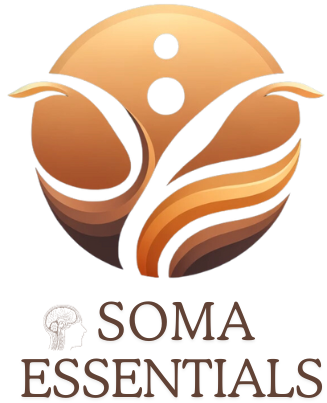Exploring the Benefits of Qi Gong for Mind-Body Connection and Well-Being
Somatic movement practices have been gaining popularity in recent years for their ability to improve mind-body connection and overall well-being. One such practice that has been gaining attention is Qi Gong, a Chinese system of gentle exercises and meditations that focus on cultivating and balancing the flow of energy in the body.
In this article, we will delve into the world of Qi Gong and explore its numerous benefits for our physical, mental, and emotional health. From its origins to its modern-day applications, we will provide a comprehensive understanding of this ancient practice and how it can contribute to our overall wellness.
So if you’re curious about Qi Gong and how it can enhance your mind-body connection, keep reading to discover all that this powerful somatic movement has to offer.
To begin, it is important to explain what Qi Gong is and how it works. Qi Gong is a mind-body practice that involves gentle movements, breathing techniques, and meditation to cultivate and balance one’s qi (life force energy). Through these practices, individuals can improve their physical health, reduce stress and anxiety, and gain a deeper understanding of themselves.
The ancient Chinese practice of Qi Gong has been around for centuries, but it is now gaining popularity as a way to enhance both physical and emotional well-being. As people search for information on soma essentials, it is important to cover the principles of somatic movement and healing, as well as somatic therapy and exercises. This guide will explore the benefits of Qi Gong and its role in somatic psychology, helping readers to improve their mind-body connection and overall health.
There are different types of Qi Gong, each with its own focus and purpose. Medical Qi Gong is used for healing and maintaining good health, while martial Qi Gong is used for self-defense and strength training. Spiritual Qi Gong focuses on connecting with the spiritual realm and cultivating inner peace.
Through the practice of Qi Gong, individuals can learn to harness their life force energy and use it to improve their physical and emotional well-being. By incorporating gentle movements, deep breathing, and meditation, individuals can release tension and stress from their bodies and minds. This can lead to a reduction in symptoms of anxiety and depression, as well as improved sleep and digestion.
In addition to the physical benefits, practicing Qi Gong can also help individuals gain a deeper understanding of themselves. By focusing on the present moment and connecting with their inner selves, individuals can develop a stronger mind-body connection. This can lead to increased self-awareness, improved concentration, and a sense of overall well-being.
In conclusion, Qi Gong is a powerful practice that can have numerous benefits for both physical and emotional well-being. By understanding the principles of somatic movement and healing, as well as the different types of Qi Gong, individuals can incorporate this ancient practice into their daily lives and reap the rewards. So, whether you are looking to improve your physical health or gain a deeper understanding of yourself, Qi Gong may be just the practice you need.
Addressing Common Concerns
As with any practice, there may be some common concerns or misconceptions about Qi Gong that need to be addressed. This could include addressing any potential physical limitations or dispelling myths about the practice.
Exploring the Principles of Somatic Psychology
Another aspect that may interest readers searching for information on soma essentials is somatic psychology. This branch of psychology focuses on the connection between the mind and body and how emotions and experiences are stored in the body. Qi Gong can be a powerful tool for somatic psychology, helping individuals to release tension and negative emotions through gentle movements and breathing techniques.
Incorporating Qi Gong into Your Daily Routine
To wrap up the body of the article, it is important to provide practical tips for incorporating Qi Gong into one’s daily routine. This can include step-by-step instructions for basic movements and breathing techniques, as well as resources for finding classes or videos to follow along with at home.
Real-Life Testimonials
To add a personal touch, it could be helpful to include real-life testimonials from individuals who have experienced the benefits of Qi Gong. This could help readers connect with the practice and see how it has positively impacted others.
Understanding Somatic Movement and Healing
use HTML structure with Qi Gong only for main keywords and
As part of the somatic movement silo, it is essential to highlight how Qi Gong fits into this category. Somatic movement practices focus on the mind-body connection and use movement as a tool for healing. Qi Gong falls under this umbrella, with its emphasis on mindful movements that connect the mind and body.
do not use “newline character”
Discovering the Benefits of Somatic Therapy and Exercises
In addition to somatic psychology, somatic therapy and exercises are also gaining recognition for their ability to improve body awareness and promote self-discovery. Qi Gong can be used as a form of somatic therapy, helping individuals to connect with their bodies and release tension and trauma. The practice also includes exercises that can be done daily to improve overall health and well-being.
Safety Precautions
When it comes to incorporating any new physical practice into one’s routine, it is important to consider any safety precautions or contraindications that may be associated with it. This is especially true for practices like Qi Gong, which involve specific movements and postures that may not be suitable for everyone.
For pregnant women or those recovering from an injury, it is important to consult with a healthcare professional before practicing Qi Gong. Certain movements may need to be modified or avoided altogether in order to ensure the safety of both the mother and baby, or to prevent further injury. It is always better to err on the side of caution when it comes to one’s health and well-being.
Additionally, individuals with any pre-existing medical conditions or injuries should also consult with a healthcare professional before starting a Qi Gong practice. This will ensure that any necessary modifications can be made to accommodate their specific needs and abilities.
By mentioning these safety precautions and contraindications, readers will have all the necessary information to make informed decisions about incorporating Qi Gong into their routine. It is always important to listen to one’s body and make any necessary adjustments for safety and comfort during any physical practice.
Other Somatic Movement Practices to Explore
To further expand on the topic, it could be beneficial to mention other types of somatic movement practices that readers may be interested in exploring. This could include yoga, tai chi, or dance therapy, and how they differ from Qi Gong.
In conclusion, Qi Gong is a powerful practice that can help improve the mind-body connection and overall physical and emotional well-being. As part of the somatic movement silo, it fits perfectly into the search intent for information on soma essentials. Through its gentle movements, breathing techniques, and meditation, individuals can experience numerous benefits and enhance their self-discovery journey.

